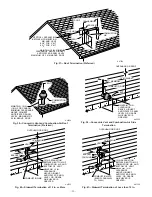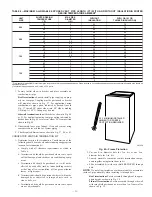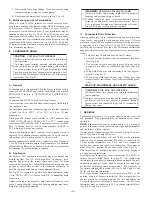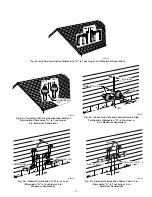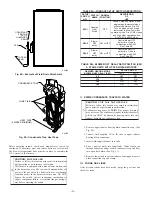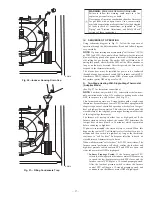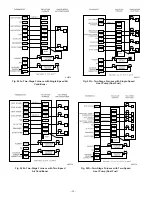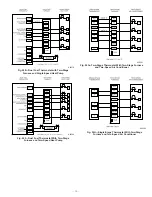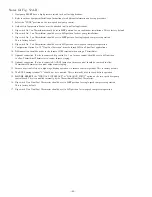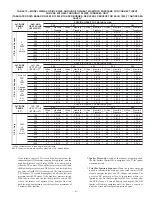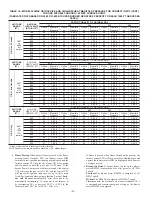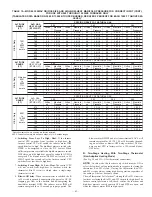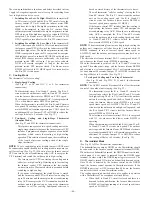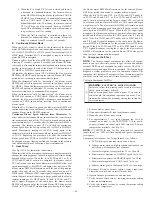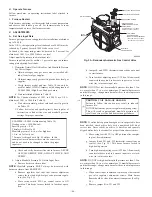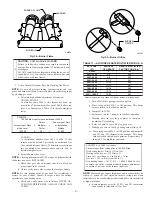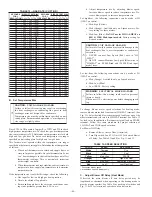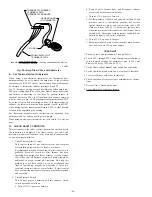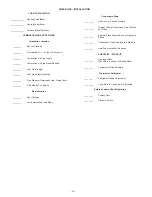
H.
Operate Furnace
Follow procedures on operating instructions label attached to
furnace.
I.
Furnace Restart
With furnace operating, set thermostat below room temperature
and observe that furnace goes off. Set thermostat above room
temperature and observe that furnace restarts.
V.
ADJUSTMENTS
A.
Set Gas Input Rate
Furnace gas input rate on rating plate is for installations at altitudes
up to 2000 ft.
In the U.S.A., the input ratings for altitudes above 2000 ft must be
reduced by 2 percent for each 1000 ft above sea level.
In Canada, the input ratings must be derated by 5 percent for
altitudes of 2001 ft to 4500 ft above sea level.
Adjust manifold pressure to obtain input rate.
Furnace input rate must be within ± 2 percent of input on furnace
rating plate adjusted for altitude.
1. Determine Natural Gas Orifice Size And Manifold Pressure
For Correct Input.
a. Obtain average yearly gas heat value (at installed alti-
tude) from local gas supplier.
b. Obtain average yearly gas specific gravity from local gas
supplier.
c. Verify furnace model and size. Table 10 can only be
used for model 352MAV furnaces with heating inputs of
20,000/13,000 (High/Low) Btuh per burner.
d. Find installation altitude in Table 10.
NOTE:
For Canada altitudes of 2001 to 4500 ft, use U.S.A.
altitudes of 2001 to 3000 ft in Table 10.
e. Find closest natural gas heat value and specific gravity
on Table 10.
f. Follow heat value and specific gravity lines to point of
intersection to find orifice size and manifold pressure
settings for proper operation.
EXAMPLE: (0-2000 ft altitude using Table 10)
Heating value = 1050 Btu/cu ft
Specific gravity = 0.62
Therefore: Orifice No. 45
Manifold pressure 3.6-in. wc for high heat
1.5-in. wc for low heat
* Furnace is shipped with No. 45 orifices. In this
example all main burner orifices are the correct size
and do not need to be changed to obtain the proper
input rate.
g. Check and verify burner orifice size in furnace. NEVER
ASSUME ORIFICE SIZE; ALWAYS CHECK AND
VERIFY.
2. Adjust Manifold Pressure To Obtain Input Rate.
a. Remove burner enclosure front.
NOTE:
Manifold pressure MUST always be measured with
burner enclosure front REMOVED.
b. Remove regulator seal caps that conceal adjustment
screws for low-and high-heat gas valve pressure regula-
tors. (See Fig. 53.)
c. Move setup switch SW-1 on control center to ON
position. This keeps furnace locked in low-heat opera-
tion.
d. Jumper R and W/W1 thermostat connections on control
to start furnace.
e. Turn low-heat adjusting screw (3/32 hex Allen wrench)
counterclockwise (out) to decrease input rate or clock-
wise (in) to increase input rate.
NOTE:
DO NOT set low-heat manifold pressure less than 1.3-in.
wc or more than 1.7-in. wc for natural gas. If manifold pressure is
outside this range, change main burner orifices to obtain pressure
in this range.
CAUTION:
UNIT DAMAGE HAZARD
Failure to follow this caution may result in reduced
furnace life.
DO NOT bottom out gas valve regulator adjusting screw.
This will result in unregulated manifold pressure and
result in excess overfire and heat exchanger failures.
NOTE:
If orifice hole appears damaged or it is suspected to have
been redrilled, check orifice hole with a numbered drill bit of
correct size. Never redrill an orifice. A burr-free and squarely
aligned orifice hole is essential for proper flame characteristics.
f. Move setup switch SW-1 to OFF position after complet-
ing low-heat adjustment.
g. Jumper R and W1 and W2 thermostat connections on
control. (See Fig. 32.) This keeps furnace locked in
high-heat operation.
h. Turn high-heat adjusting screw (3/32 hex Allen wrench)
counterclockwise (out) to decrease input rate or clock-
wise (in) to increase rate.
NOTE:
DO NOT set high-heat manifold pressure less than 3.2-in.
wc or more than 3.8-in. wc for natural gas. If manifold pressure is
outside this range, change main burner orifices to obtain pressure
in this range.
i. When correct input is obtained, replace caps that conceal
gas valve regulator adjustment screws. Main burner
flame should be clear blue, almost transparent. (See Fig.
54.)
j. Remove jumper R-to-W1 and W2.
Fig. 53—Redundant Automatic Gas Control Valve
A04048
REGULATOR COVER SCREW
PLASTIC ADJUST SCREW
LOW STAGE
GAS PRESSURE
REGULATOR ADJUSTMENT
(
PROPANE–WHITE, 9.5 TURNS
NATURAL–SILVER,9.5 TURNS)
MANIFOLD
PRESSURE TAP
INLET
PRESSURE TAP
ON/OFF SWITCH
REGULATOR SPRING
HIGH STAGE GAS
PRESSURE REGULATOR
ADJUSTMENT
(
PROPANE–WHITE, 13.5 TURNS
NATURAL–SILVER,12 TURNS
)
—46—
→
Содержание CONDENSING GAS FURNACE 352MAV
Страница 51: ...51...

